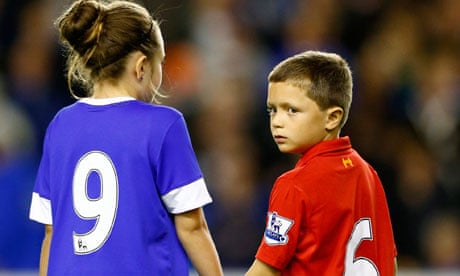The Football Association's role in selecting Hillsborough as the venue for its 1989 FA Cup semi-final, despite Sheffield Wednesday's ground having an out-of-date safety certificate and a history of crushes, is coming under fresh scrutiny 23 years after 96 people were killed there.
The Hillsborough Independent Panel found that the FA had not asked Sheffield Wednesday about the ground's safety, and had also ignored letters from supporters caught in a crush in the Leppings Lane end the previous year. One letter said: "When there is a large crowd entering this part of the ground, it will always be a death trap." Another fan had written: "The whole area was packed solid to the point where it was impossible to move and where I, and others around me, felt considerable concern for personal safety."
Nevertheless, despite what the panel described as "known risks" making disaster "foreseeable", the FA went ahead with its invitation, asking no questions about the ground's safety, except to describe as "safety fencing" the high mesh fences at the front of the Leppings Lane pens that meant Liverpool fans caught in the crush could not escape.
The FA's letter was concerned with the share of the money from paying supporters – that Sheffield Wednesday would keep 10%, the FA 90%; and with ticketing arrangements which included reserving 350 of the best seats in the ground "for FA Council members and guests".
In his official report into the disaster, Lord Justice Taylor judged in August 1989 that it was "ill-considered" of the FA to choose Hillsborough because Liverpool supporters had had difficulties at the ground in the past. However, Taylor ruled that South Yorkshire police's mismanagement of the crowd on the day, 15 April 1989, was the "prime cause" of the disaster and that the FA's choice of ground was not itself "causative."
Lawyers advising the Hillsborough Family Support Group, however, say the Director of Public Prosecutions should investigate whether the FA's selection of Hillsborough could amount to gross negligence and therefore make English football's governing body subject to a charge of corporate manslaughter.
Margaret Aspinall, the HFSG chair, whose son James, then 18, died at Hillsborough, said: "The FA got away with it. There wasn't an apology, they never got in touch with the families, they paid no compensation. They never spoke up and admitted their fault in it; not one of them stood up."
Last Thursday, following the panel's report, the current FA chairman David Bernstein issued "a full and unreserved apology" to the families of those who died.
"We are deeply sorry this tragedy occurred at a venue the FA selected. This fixture was played in the FA's own competition," the apology stated.
However, the FA is unwilling to clarify what the apology covers, and whether Bernstein was specifically acknowledging and apologising for the FA's own failures. Bernstein also said: "It is a matter of extreme regret and sadness that it has taken so long for these findings to be published and the truth to be told."
But it is not clear what Bernstein was referring to, because the findings on the FA's role in selecting Hillsborough as the ground, and the truth about, it were established by Taylor in his report 23 years ago. There was almost nothing new in the panel's report as it related to the FA.
Aspinall said the families have always deeply resented the fact that nobody at the FA spoke out against the South Yorkshire police case, now exposed as lies and a cover-up, to blame the fans for the disaster rather than the failings, including the FA's, identified by Taylor. She said that while the families have endured great suffering, some of those in authority, closely involved with the disaster have "done very well" since.
At the FA, as at Sheffield Wednesday and South Yorkshire police, nobody resigned as a result of the failings at Hillsborough. In January 1990, Taylor produced his second report, which recommended that football grounds in England (later limited to the clubs in the top two divisions) should be made all-seater.
The FA pushed hard for the all-seater recommendation, against the submission of the FSA, which argued that standing, properly administered, was safe, and the clubs would increase ticket prices for seats, which they have since done very steeply. In the summer of 1989, a director of West Bromwich Albion football club, Mike McGinnity, bought a company and formed a division, Pel Stadium Seating. McGinnity later took on as a director Sir Bert Millichip, who was on the WBA board with him and had been the FA's chairman when it selected Hillsborough as the 1989 semi-final venue. Millicihip acknowledged that his role was to use his contacts in football to win more work for Pel, which made millions of pounds installing seats at Old Trafford, Anfield and other major football grounds after the Taylor Report.
Millichip said in an interview shortly before he died in 2002 that he had been paid by Pel, but: "It wasn't much. It kept me in eccles cakes and gin and tonics."
